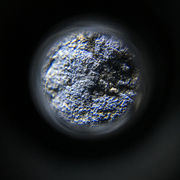visitors
Finished !
Wishing a quick and complete recovery to the all victims of
the Noto Peninsula Earthquake in 2024.
At 16:10 on 1 January 2024, there was a magnitude 7.6 (preliminary) earthquake in the Noto region of Ishikawa Prefecture, Japan.
Many roads are reported to be sinking or collapsing. Rescue operations in the affected areas have been delayed because of these problems.
We wish our deepest sympathies to all people who are staying at home or in shelters in the cold winter days.
We also pray for you to rebuild the region with great strength.

We are proceeding with engineering investigation with the cooperation of laboratory of Associate Professor Oguchi of Saitama University to verify the soil quality etc. of the cave.
-
Based on the results of the data review, we suggested the necessity of renovation to the sealed gate to Josenji Temple.
-
We entrusted a grant from the East Japan Railway Culture Foundation for the sealed gate renovation project.
Geological field survey
地盤地質 現地確認
We spend a lot of time studying the "layer breaks" and "shell fossils" that can be considered in the cave. We are also observing the geology of the neighborhood.
Sampling
サンプリング
We obtained samples at two locations in the cave with permission from Josenji Temple. We took the samples back to our laboratory to conduct various laboratory tests.
Temperature and Humidity monitoring in Taya Cave
洞内温湿度モニタリング調査
We have installed sensors called "data loggers" in the caves to monitor the weathering conditions inside the caves. Those sensors monitor the temperature and humidity inside and outside the caves once an hour.
Thermostat photography survey
サーモスタット撮影調査
We conducted a photographic survey using a thermostat camera to see if we could visualize the temperature changes in the cave. We recorded temperature measurements of the cave walls to examine whether it would be possible to capture the subtle changes in temperature change over time in a moving image. As a result, it was not possible to capture the temporal variation of temperature change on video due to very micro changes.
Equipment cooperation: City of Yokohama
Destructive Test (in the Labo)
破壊試験(室内試験)
Based on the material sampled from the cave with permission from Teisenji, we conducted destructive testing at Saitama University. We also conducted a dry/wet cyclic test to understand the basic weathering conditions of the ground in the cave.
Non-destructive Test(on-sight)
非破壊試験(現場試験)
We also conduct nondestructive testing in actual caves. We take care not to damage the chisel marks left on the cave walls and conduct resilience and ultrasonic transmission tests.
Analysis of surface Materials on the cave wall
洞内表面析出物分析
The walls of the cave (cave walls) are adhered with various colored materials. These precipitates were deposited after being transformed underground by rainwater and groundwater that fell on the surface of the satoyama over a long period of time. We are analyzing these precipitates to investigate what kind of materials are coming out of the ground.
CO2 Survey
洞内二酸化炭素測定
We are measuring the carbon dioxide concentration in the cave. We have identified that there are some areas where carbon dioxide concentrations are locally high (areas that are not part of the general tour route). We are also trying to measure by remote sensing. We are considering further improvement of the measurement equipment because of the difficulty of getting a power source in the long cave.






































































